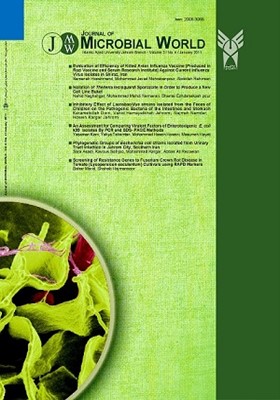-
-
List of Articles
-
Open Access Article
1 - Evaluation of efficiency of killed avian influenza vaccine (produced in Razi vaccine and serum research institute) against current influenza virus isolates in Shiraz, Iran
Samaneh Hooshmand Mohammad Javad Mehrabanpour Abdollah Rahimian -
Open Access Article
2 - Isolation of Theileria lestoquardi Sporozoite in order to Produce a New Cell Line Buket
Nahid Naghshgar Mohammad Mehdi Namavari Shamsi Ezhdahakosh pour Mohammad Abdi Goodarzi Mohammad Hosein Hoseini Kasra Esmail nia Masoume Hayati Omid Reza Amr abadi -
Open Access Article
3 - Inhibitory Effect of Lactobacillus strains isolated from the feces of children on the pathogenic bacteria of the intestines and stomach
Keramatollah Dorri Vahid Hemayatkhah Jahromi Najmeh Namdar Hosein Kargar Jahromi -
Open Access Article
4 - An assessment for comparing virulent factors of enterotoxigenic E.coli k99 isolates by PCR and SDS- PAGE methods
Yasaman Kiani Yahya Tahamtan Mohammad Hosein Hoseini Masumeh Hayati -
Open Access Article
5 - Phylogenetic groups of Escherichia coli strains isolated from urinary tract infection in Jahrom city, southern Iran
Sara Asadi kavous Solhjoo Mohammad Kargar Abbas Ali Rezaeian -
Open Access Article
6 - Screening of resistance genes to Fusarium Crown rot disease in Tomato (Lycopersicon esculentum) cultivars using RAPD markers
Bahar Morid Shahab Hajmansoor
-
The rights to this website are owned by the Raimag Press Management System.
Copyright © 2021-2025







